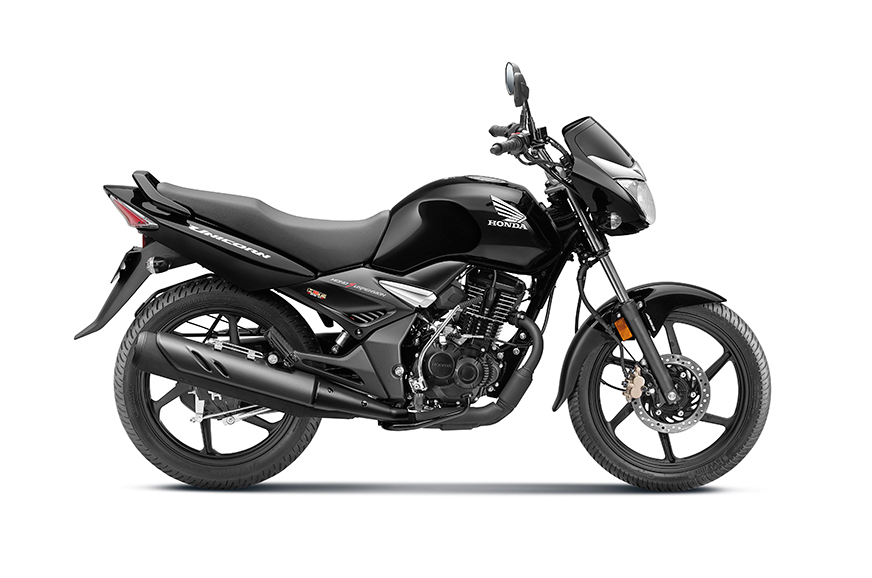
Let’s begin with a brief history of the Unicorn. The bike was launched all the way back in 2004 and it continued largely unchanged for over a decade. Honda then attempted to replace it with the superior CB Unicorn 160 in 2015, but a few issues with the early lots of motorcycles killed its reputation. Heavy demand forced Honda to bring back the original Unicorn 150, and the bike continued to sell in good numbers. With a new CB suffix to the name, the Unicorn 150 went on to receive a BS4 update and ABS as well, when the law mandated it. The Unicorn is a sales giant having sold over 2.5 million units in its 16 years of existence.
As for the CB Unicorn 160, Honda simply didn’t give it the necessary ABS update in 2018 and the motorcycle quietly died. Now with the big transition to BS6, Honda faced the decision as to whether to make the big investment in upgrading the CB Unicorn 150 to BS6 or to give the CB Unicorn 160 a second chance. The approach they’ve taken is a combination of both options, which brings us to our first point you need to know.
This is a new product
For 2020, Honda has dropped the CB prefix as well as the numerical suffix, and has simply called the bike the Unicorn. What the company has done is take the 162cc engine from the CB Unicorn 160 and install it in a motorcycle that looks like the old 150. Details on the chassis are not clear, but it appears that Honda has utilised the main frame from the 160, because at 140kg, the new Honda Unicorn is a whole 6kg lighter than the CB Unicorn 150. This is a similar case to the CB Unicorn 160, which also weighed significantly lesser than the 150 when it was launched. Another similarity is that the new Unicorn comes with a longer seat (by 24mm) than the original 150, and this was also something that the CB Unicorn 160 offered.
However, there are numerous other specifications that are more in line with the old Honda CB Unicorn 150. For starters, the seat height is identical at 798mm and the bike continues to use 18-inch wheels, against the 17-inch units on the Unicorn 160. At 1,335mm, the wheelbase is also almost identical, and is a good 11mm longer than the CB Unicorn 160. And finally, we come to an aspect that is important to buyers in this segment – ground clearance. There’s good news here too, and the new Honda Unicorn 160 boasts 187mm of clearance, which is an 8mm increase over the old bike, and just 13mm lower than the KTM 390 Adventure. Clearly, the new Unicorn has many similarities to the old CB Unicorn 150, but the biggest similarity is one we’ll address in the next point.
It looks almost identical to the 150
Honda is being extremely safe here, and after they burned their fingers with the CB Unicorn 160, they’re taking zero chances with the new Unicorn. At first glance, you’d struggle to tell any differences; the new Honda Unicorn looks almost identical to its forefather. However, a closer look will reveal that the headlamp cowl gets slightly different detailing and the side plastic panels receive a small redesign as well. Beyond this, everything remains the same, including the 13-litre fuel tank and the analogue meters, although the latter now gets a grey colour detailing instead of blue as on the old bike. As for the colours, even this is very similar, and you get a choice of three colours – red, grey and black.
It will be quicker than before
The 162cc motor in the CB Unicorn 160 produced 14.02hp/ and 13.92Nm, compared to the CB Unicorn 150’s 12.92hp and 12.8Nm. While the new Unicorn uses the same 162cc motor with identical bore and stroke figures, it now gets fuel injection and makes 12.92hp, which is exactly the same as the old Unicorn. While that may disappoint, the interesting number to note is that it makes 14Nm of torque (at the same 5,500rpm as the Unicorn 150), and this figure is higher than both the Unicorn 160 and the old 150. Factor in that this bike is lighter than the Unicorn 150, and it is safe to expect a slightly improved performance. Fuel efficiency could also see an increase, although Honda doesn’t seem to be making any claims with regard to this, apart from mentioning the words ‘superior efficiency’ in the press release.
Light on features
Every new Honda launch these days appears to bring in a big serving of new features, but that's not the case here. The only changes are the incorporation of an engine-kill switch and a switch to a DC headlamp. However, you won’t find any features like an LED headlamp, side-stand-down engine kill function, or a digital instrument console. In fact, the new Unicorn doesn’t even get Honda’s new silent-start system, which is a nice feature found in new scooters as well as the new Unicorn’s less-expensive BS6 siblings like the new Honda Shine and SP 125.
Heavy on price
At Rs 93,593, the new Honda Unicorn is nearly Rs 13,000 more than the ABS-equipped CB Unicorn 150. That’s a big hike, and while you do get the improved powertrain and a few more comforts, the fact that the 2020 Honda Unicorn looks nearly identical, while not offering a lot more than the bike it replaces, will be hard pill for customers to swallow. Then again, the Unicorn’s closest rival, the Bajaj Pulsar 150 BS6 actually costs about Rs 1000 more, so it would appear that this is simply the new world order in the BS6 era.
from Autocar India - News https://ift.tt/2whcZHo

0 comments:
Post a Comment